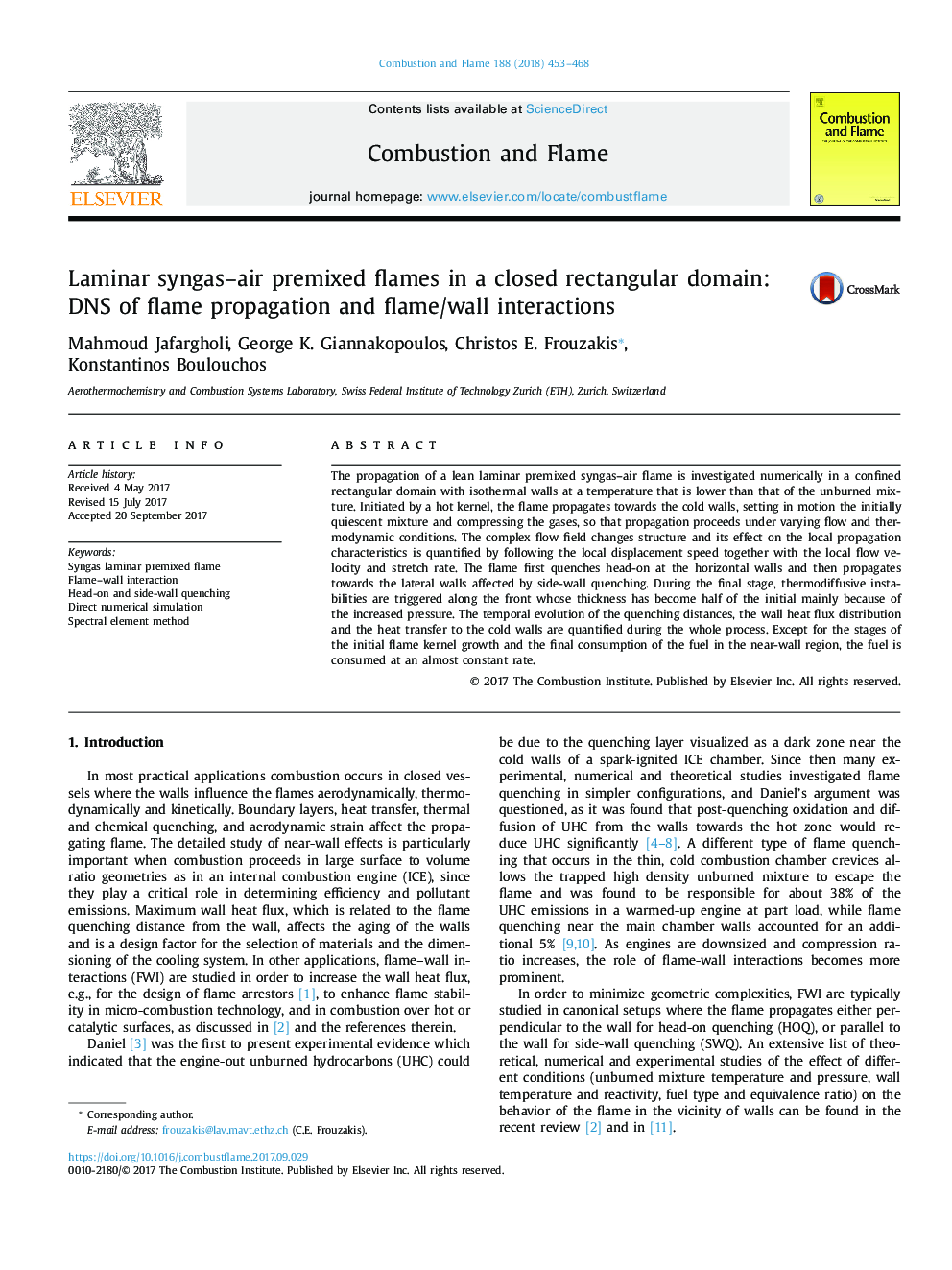| Article ID | Journal | Published Year | Pages | File Type |
|---|---|---|---|---|
| 6593978 | Combustion and Flame | 2018 | 16 Pages |
Abstract
The propagation of a lean laminar premixed syngas-air flame is investigated numerically in a confined rectangular domain with isothermal walls at a temperature that is lower than that of the unburned mixture. Initiated by a hot kernel, the flame propagates towards the cold walls, setting in motion the initially quiescent mixture and compressing the gases, so that propagation proceeds under varying flow and thermodynamic conditions. The complex flow field changes structure and its effect on the local propagation characteristics is quantified by following the local displacement speed together with the local flow velocity and stretch rate. The flame first quenches head-on at the horizontal walls and then propagates towards the lateral walls affected by side-wall quenching. During the final stage, thermodiffusive instabilities are triggered along the front whose thickness has become half of the initial mainly because of the increased pressure. The temporal evolution of the quenching distances, the wall heat flux distribution and the heat transfer to the cold walls are quantified during the whole process. Except for the stages of the initial flame kernel growth and the final consumption of the fuel in the near-wall region, the fuel is consumed at an almost constant rate.
Related Topics
Physical Sciences and Engineering
Chemical Engineering
Chemical Engineering (General)
Authors
Mahmoud Jafargholi, George K. Giannakopoulos, Christos E. Frouzakis, Konstantinos Boulouchos,
